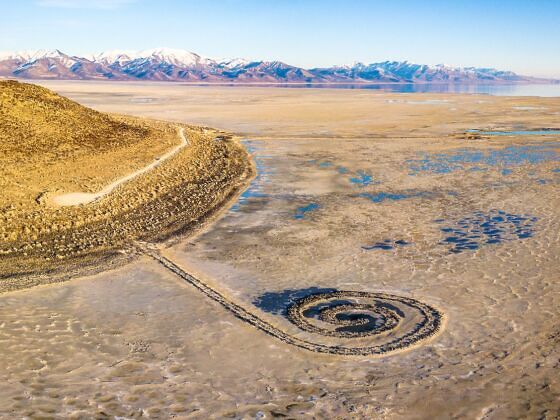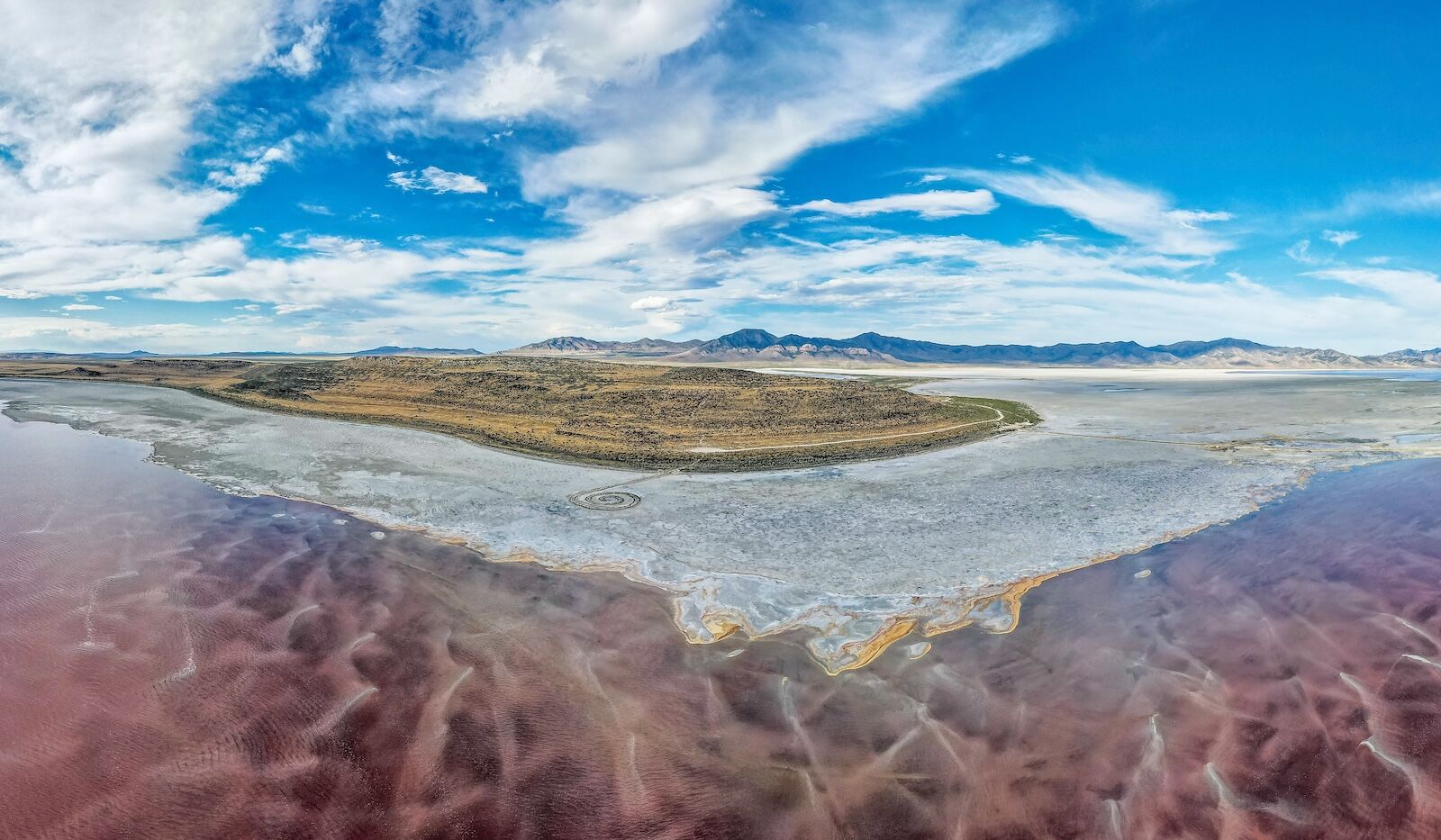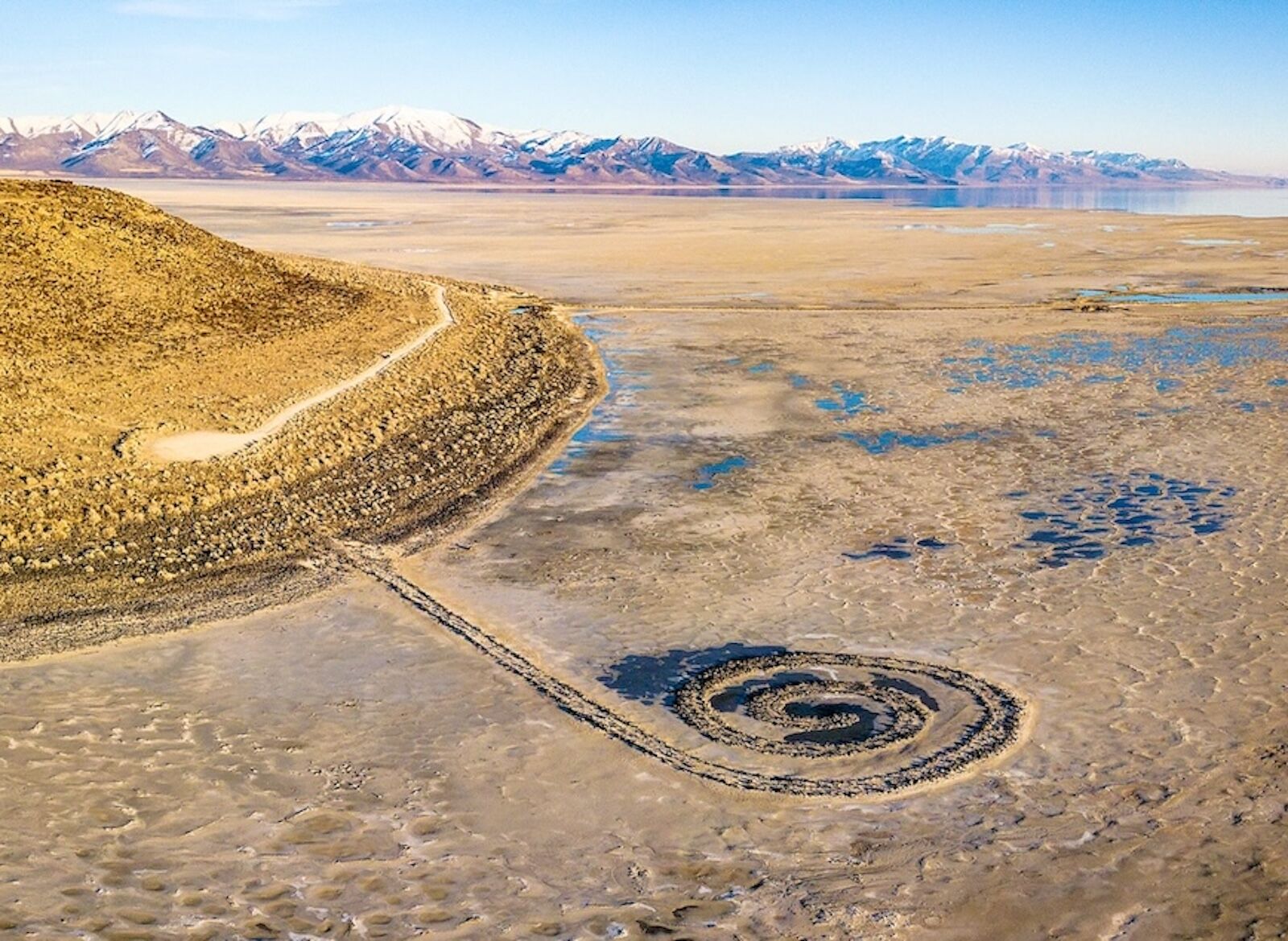The world’s greatest pieces of art aren’t all confined between the walls of museums; some are out in the open for everyone to take in without barriers. That’s the case of Spiral jetty, an artwork by the late artist Robert Smithson that’s located on the shores of the Great Salt Lake in Utah. For over five decades, Spiral Jetty has been widely considered to be the state’s most famous piece of art, as well as the most influential piece of land art in the world, as such it’s just been added to the National Register of Historic Places.


Utah’s Most Stunning Work of Art Lies on the Shores of the Great Salt Lake
What is Spiral Jetty?

Photo: Charles E Uibel /Shutterstock
Spiral Jetty is a 15-foot-wide and 1,500-foot-long piece of land art created by Robert Smithson and constructed off Rozel Point on the shore of the Great Salt Lake’s North Arm. The immense artwork is a pier-like structure that starts in a straight line and evolves into a counterclockwise coil. It resembles a wizard’s staff, one that would not look out of place in Gandalf’s hands.
Spiral Jetty was built in 1970 from 6,650 tons of black basalt rock and earth. It is the most well-known piece of land art (AKA earth art) in the world. Land art is art that’s made directly in the landscape and from the landscape by using natural materials such as earth, rocks, wood, sand, etc.
Spiral Jetty is owned by the Dia Art Foundation since 1999, when Nancy Holt, the late artist’s wife donated it.
While it is his most famous, Spiral Jetty isn’t Smithson’s only piece of land art. He also designed Broken Circle/Spiral Hill (see image above), which as built in 1971 at a sand quarry in Emmen in The Netherlands, and Amarillo Ramp, built in Amarillo, Texas, in 1973 (see image below).
Of the three pieces of land art created by Smithson, only Spiral Jetty is open to the public and accessible for free every day of the year.
The evolution of Smithson’s land art pieces

Photo: Charles E Uibel/Shutterstock
Unlike other works of art that are kept in carefully controlled environments for their preservation, pieces of land art change with, are dependent on, the landscapes they inhabit.
Amarillo ramp, which was initially built to emerge from an artificial lake is now eroded and sits in a dried-up basin. Broken Circle/Spiral Hill, while still intact, has lost some of its perfectly circular shape due to decades spent in the elements.
In the case of Spiral Jetty, over the course of its existence, it’s been both entirely submerged and visible, depending on the varying water levels of the lake. Since 2002, however, it’s not only out of the water, but far away from the water’s edge because of “drought and water diversion projects,” The UMFA (Utah Museum of Fine Arts) explains. Great Salt Lake experts even use the artwork as a drought level indicator, something that the artist never intended.
Thanks to its new status as a nationally registered historic place, Spiral Jetty, and the environment surrounding it will benefit from public and private efforts to preserve and protect it. (Note that The National Register of Historic Places only includes properties that are at least 50 years of age.)
“We hope the enhanced recognition will dissuade other interventions in the landscape that negatively impact the environment and the lake’s ecology,” says Jordan Carter, curator at the Dia Art Foundation, to Artnet.
How to see Spiral Jetty?
Spiral Jetty is located around 2.5 hours by car from Salt Lake City, however, the site is remote and there are no facilities nearby (no bathrooms, no food or drinks venues, no gas stations), so visitors must come prepared. Detailed driving directions are available on the Dia Art Foundation’s website.
Visitors can walk on the artwork, and because it is not covered in water, it is safe and dry. The Dia Art Foundation asks from visitors that they apply the Leave No Trace principles during their time at Spiral Jetty: They should not move any rocks, damage any vegetation, or make fire pits, for example.